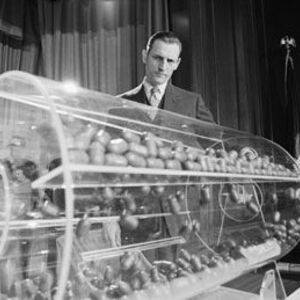The Draft
The Peacetime Draft
Conscription, also known as “the Draft,” has been utilized in the US during times of war as a way of filling its military ranks. The most controversial use of conscription came as the result of the Selective Training and Service Act of 1940, which marked the first peacetime draft in American History. In World War II, millions of American men were conscripted into the United States military. The World War II draft eventually would end in 1945, but when the Truman Administration instituted the Selective Service Act of 1948, all men aged 18-26 were required to register for the draft. As a result, military service became an inevitable part of every American draft aged male in the decades following World War II. As Larner stated in his interview,
This society-wide expectation of being drafted into the "peacetime" military was an experience unique to the Vietnam and Korean wars. Although draftees comprised only 25% of the forces in Vietnam combat zones, the system of conscription forced many young American men to "volunteered" so that they could choose which branch they would join. The only times that the Draft was implemented were the Civil War, World War I, World War II, and the years between 1948-1973. Additionally, many of the men who were drafted for the Vietnam war came from families where their fathers had served in World War II two decades earlier, further enforcing this notion that every American was obligated to serve. This view was expressed by Dartmouth '64 Hugh Savage.
December 1, 1969
In 1969, the draft lottery was implemented where draft-eligible men were assigned numbers 1-366 based on their birthday. These numbers were placed in blue plastic capsules and placed in a glass bowl. The capsules then were randomly drawn one by one and read out loud on national television. This public display only increased the outrage at what was already a deeply unpopular war.
Initially, college and graduate school draft exemptions had allowed for those with the resources to enroll in higher education to avoid the draft. However, the draft reform removed these exemptions. Some college students still avoided the draft by obtaining a psychiatric or medical disability or a conscientious objector status.
Dartmouth Class of 1970 writer Denis O’Neill details some of the methods that his friends used to obtain medical disability in his book Whiplash: When the Vietnam War Rolled a Hand Grenade Into the Animal House
Leading up to their physical examinations, For some, “the happiest path to a deferment lay in obesity.” One of his fraternity brothers who “had asthma as a child began a three-pack a day cigarette habit.” However, some of O'Neill's friends took more graphic measures to avoid military service.
As extreme as these strategies for deferment may seem, O'Neill's friends were far from the only ones with deferment strategies. O'Neill claimed that "of the fifty students who took physicals in Manchester, New Hampshire, forty-eight were judged to be temporarily or permanently unfit for military service."

